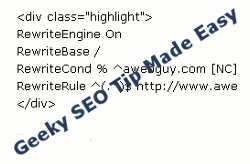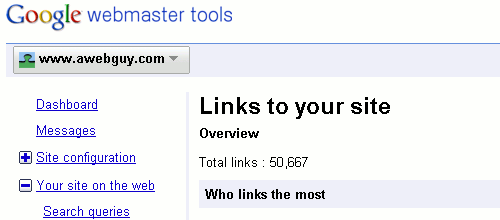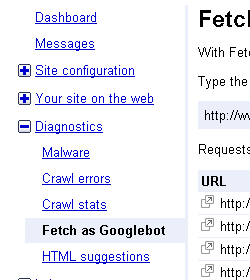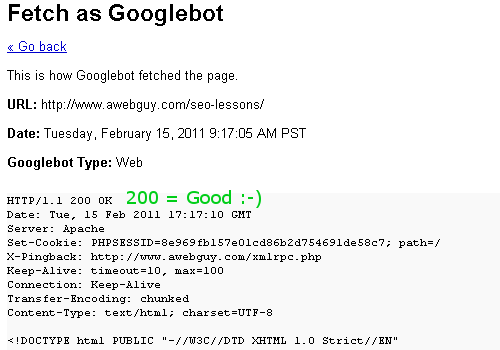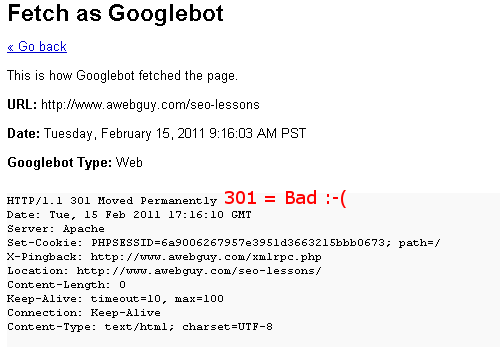
Whether you work in a large corporation or a small company, this applies to you. I am going to explain why SEO is far more than just the technology it makes use of. If you think SEO is a technology skill, or worse, you are guilty of leaving your SEO to the IT department, duck and take cover! This may hit you between the eyes.
Did somebody ever tell you that SEO is a function of IT? If so, I want to explain how terribly misinformed they truly are. If you believed them, this may be upsetting, but at least it’s the truth.
First, allow me to break away from the acronyms for a moment. “SEO” stands for search engine optimization, and it involves the art and science of helping websites to rank in the top of search engine results for given search keywords. “IT” stands for Information Technology, and one way to look at it is the people who help keep your computer network running, and who you call if your email stops working.
I just dramatically understated each of the skills involved, but that gives you an idea to start with. What I hope to explain in a way you can appreciate is that IT is a technology skill, and SEO has more to do with people than it does computin’ machines. It is a marketing skill that makes good use of technology, and not a technology that makes use of marketing.
Sure, there are important matters of technology involved, such whether to use www or no www and how to do a 301 redirect, or the very important difference in a slash or no slash at the end of your web address. That is just SEO at its most basic level, but if you want to rank well in searches, there is a whole lot more to it.
How the Absurdity of SEO Being a Technology Skill Began
Search engine optimization, in its earliest days, was looked at as something to do with computers. It was all a part of that new Internet craze that told everybody to have a website. Companies who wanted a website needed “computer people” to make it happen. After all, the Internet runs on computers, and having a website was a pretty technical thing.
Websites really are very technical when they are done well. Most people who look at websites don’t understand all the programming that goes into it, the security features, or the server architecture that it all runs on. So, it looks really technical to them, and for many people it implies that everything surrounding it surely must be technology-oriented.
Let’s take another look!
Why Do Companies Have Websites?
Let us consider the most common reason any company has a website. It is to emphasize the assets of their business. Websites are built with technology, but their most common purpose is marketing. Whether that marketing is just to share information for free, increase sales, or impress investors, it is still a tool of marketing and communications. There are very few cases where a company will create a website “just for the heck of it” or to intentionally waste money. There must be a reason, and that reason almost always has its roots in being more visible to others.
Doesn’t this begin to sound a bit outside of the scope of those “computer people” who keep your email working? Sure, there are many aspects of SEO that require technical skills, but definitely not the kind that fit into an IT job role. Save your IT people for something more up their alley.
Many SEO professionals have been falsely embedded into IT departments, and they simply do not belong there. The most important and effective job functions of effective search engine optimizers have little to do with computers or technology. Sure, we know a lot about technology, because we have to, but that is not our most valuable asset. Again, I submit that a surgeon may know a lot about her scalpels, but that does not make her a “scalpel person”.
Here are a few basic examples of how technology is a part of SEO. See the articles as follows:
- SEO Tip: Trailing Slash, Canonicalization, and Google
- WWW or No WWW is Not the Same! Fix with Htaccess 301 Redirect
- SEO Meta Tags: Oh, You Must Be Another SEO Expert!
There must be at least a squillion more technology matters related to SEO. I think I’ve probably written something about most of them over my 15+ years in the industry. Even if you put them all to perfect use, it will never make up for the importance of understanding how to make things more marketable.
I’m not trying to fool you into thinking technology does not matter. I mean, I did write those earlier technology-related articles about SEO, and many more. I also have a significant amount of proof that I know the job of SEO. The technology does matter … a lot … but it will not trump the other magic that a truly talented SEO professional brings to the equation. Those things include defining what moves people to action, analyzing demographics, psychographics, geographics, and deeply understanding Internet usage on the human level. It also requires analyzing the competition and knowing what makes you the stronger competitor.
The many non-technology creative marketing assets of a good SEO professional with measurable marketing talent are vastly more valuable than any amount of technology.
Understanding SEO as a Hybrid Skill Set
Most companies understand that when people search the Internet for something, it is good to be found at the top of the list. People start clicking at the top of the list, and not at the bottom. So, it makes sense, right? The difference a few spots down that list can make is astonishing. See “Improve SEO Return on Investment (ROI) With Simple Math” to understand the difference.
It is a bit harder to understand SEO as a hybrid between multiple departments within a company. It involves defining and distilling the best assets of a company into something people will love. It involves putting those things to work on the Internet where people will see them and link to them from their websites, blogs, Twitter, Facebook, social bookmarking sites, and more. It involves making a company popular based on its own previously hidden merits. Within the mix, there is technology, but the technology is just to support the awesomeness. The awesomeness is not there to support the technology.
It may help to consider that the single most prominent factors for top search engine ranking is the number of other websites linking to yours, and the quality of those websites. You don’t get those links from technology, you get them from people who think you’re amazing, and you get those people by repeatedly doing amazing things.
Reciprocal link exchanges are a bad idea, and you don’t have enough friends to link to your website to outrank any significant competitors. It’s going to take more than that, so isn’t it wise to at least have the right department handling it?
I recently wrote a proposal for a company that I really like. I like them because of their industry, and I like them because I know I can do amazing things for them. When I discovered that they are relying on the IT department to handle their SEO efforts, it made my stomach hurt.
I don’t take on projects if I am not 100 percent confident that I can help them. In this case, there should be little wonder why their websites have a miserable response. They just don’t know how much they don’t know. I hope to fix that!
Photo Credit:
Washington State Cage Fighting Championships by Kelly Bailey via Flickr
Podcast: Play in new window | Download
